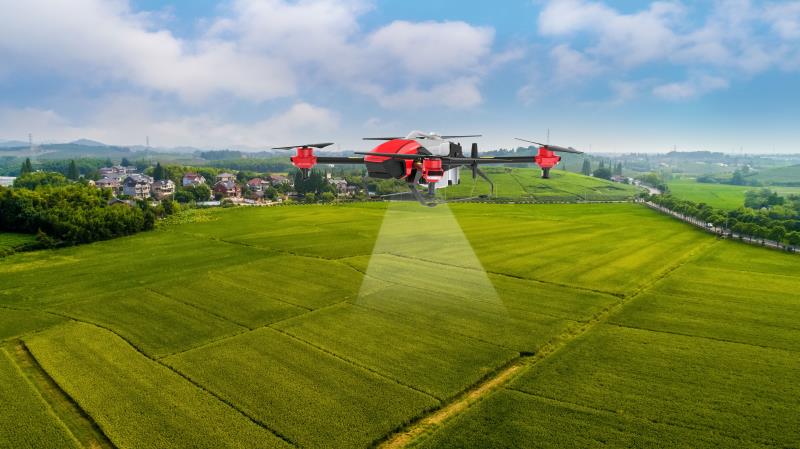Crowds of perch swim comfortably in the fish pond, and several circling waterfowl suddenly skim the water surface, causing a ripple. At the Shuanggao Fishing Ground in Siyang County, Jiangsu Province, located on the bank of Hongze Lake, the person in charge, Du Zhijiang, is sitting indoors with a mobile phone, checking for abnormalities in the water temperature, dissolved oxygen, and pH values at the entrance of the pond.
Previously, to obtain these data, one had to manually measure each pond one by one, and it took half a day to measure 24 fish ponds. Moreover, because it was impossible for people to measure all the time, they had to rely on experience to feed and determine whether there was oxygen deficiency, which inevitably led to errors and affected the yield and quality of fish. “Du Zhijiang suddenly raised his voice,” Now it’s different! Digitalization.
This aquaculture farm, which integrates seed production, hatching, breeding, fry, and adult fish, has now caught the “fast train” of digital development. In 2021, the Agriculture and Rural Bureau of Siyang County invested 26 million yuan to build a digital fishing system. As the largest aquaculture base in the local area, Shuanggao Fishery Farm fully enjoys the dividends of digital fishing.
In the ponds of fish fry breeding bases in fishing grounds, tens of thousands of small fish fry that are almost invisible gather at the bottom of the water or swim in groups. Sensors floating on the water continuously transmit real-time data to the fishing ground platform and the Jiangsu Province Fishery Intelligence Platform. On this platform with more than ten functions such as video patrols, online water quality monitoring, intelligent control of breeding equipment, and meteorological monitoring, there is a intuitive understanding of how fish grow, whether the temperature of the pool water is suitable, and whether water quality indicators are normal. It can also be remotely controlled through mobile phones or computers to achieve operations such as feeding and oxygenation.
Digital fishing has also brought a series of “good things” to Du Zhijiang in terms of seedling cultivation. Firstly, it can scientifically configure the density of pond seedling cultivation based on the size of the fish fry and the size of the pond mouth, increasing output efficiency; Secondly, it has achieved a breakthrough in breeding bass fry throughout the year; Thirdly, the survival rate of bass fry has exceeded the 50% mark, overcoming the problem of low survival rate of bass. We have also developed a national level new variety ‘Su Perch No.1’ suitable for the Hongze Lake region, and it has started to be put into use. This variety needs to have a breeding scale of about 30000 acres in the local area! “Du Zhijiang’s mouth was filled with pride.
At the outdoor entrance of the pond, more than ten intelligent monitoring systems, including online water quality monitoring, intelligent control of aquaculture equipment, video monitoring, and water quality regulation, have been installed in the 350 acre double high fish pond. Technicians can view real-time data such as water temperature, pH value, and temperature collected by 170 sensors through large screens, computers, and mobile phones. Du Zhijiang told reporters that if the data is abnormal, the system will automatically alarm and the intelligent sensor will also automatically turn on the oxygen concentrator. Fertilization, pesticide spraying, and bait placement have also achieved digital management. Now, the production capacity of perch per acre has reached around 1300 kilograms, an increase of 16% compared to before.
With the rapid development of digitization and informatization, technologies such as big data, cloud computing, and the Internet of Things are widely used in various aspects of agricultural production, and agricultural production methods are being “reshaped”. In the vast farmland of Zhucun Community in Baichihe Town, various cities in Shandong Province, the dense and lush corn resembles a “green veil” that covers the sky and grows happily. Next to the corn field, the drone’s green light flickered and was waiting to fly. The drone operator Wang Zhihai was about to carry out a “flight prevention” mission against corn leaf rust. I saw him click on the dedicated app on his phone and quickly generate coordinates for the work site. With the start button pressed, the drone buzzed into the air, and the brown liquid sprayed evenly in a mist onto the green leaves. Previously, manual spraying could only cover one or two acres of land in an hour. Now, a drone operator can cover more than 30 acres per hour and use a mobile phone to remotely command and do the work! “Wang Zhihai proudly boasted.
Now corn is in the heading stage, and it is time to spray foliar fertilizer. This period is also a high incidence period for corn green insects and aphids, and a key period for preventing and controlling corn jaundice and leaf rust, which is related to the corn harvest. The drone spraying foliar fertilizer evenly, with high insecticidal and bactericidal efficiency, saves time and effort, saves medication costs, reduces labor intensity, and greatly improves agricultural production efficiency Starting from 110 acres of farmland in 2015, to 10000 acres of entrusted farmland in Chengfang, from single grain planting to providing full industry chain services before, during, and after production, Wang Zhihai became more and more enthusiastic as he worked hard. From ‘knowing how to farm’ to ‘knowing how to farm’, I have witnessed the progress of agricultural production methods. It’s no exaggeration to say that we are also a new type of professional farmer now! “Wang Zhihai felt proud from the bottom of his heart.


没有reply内容